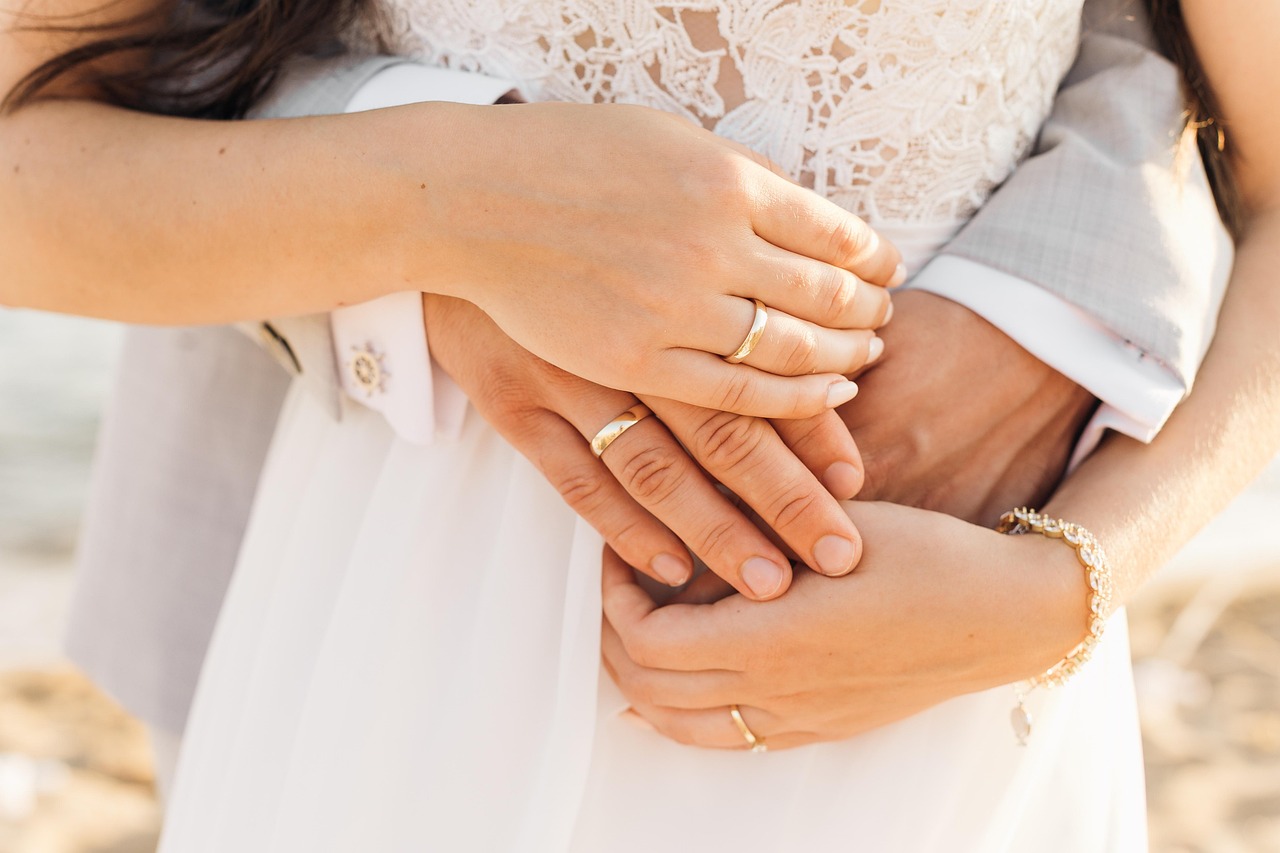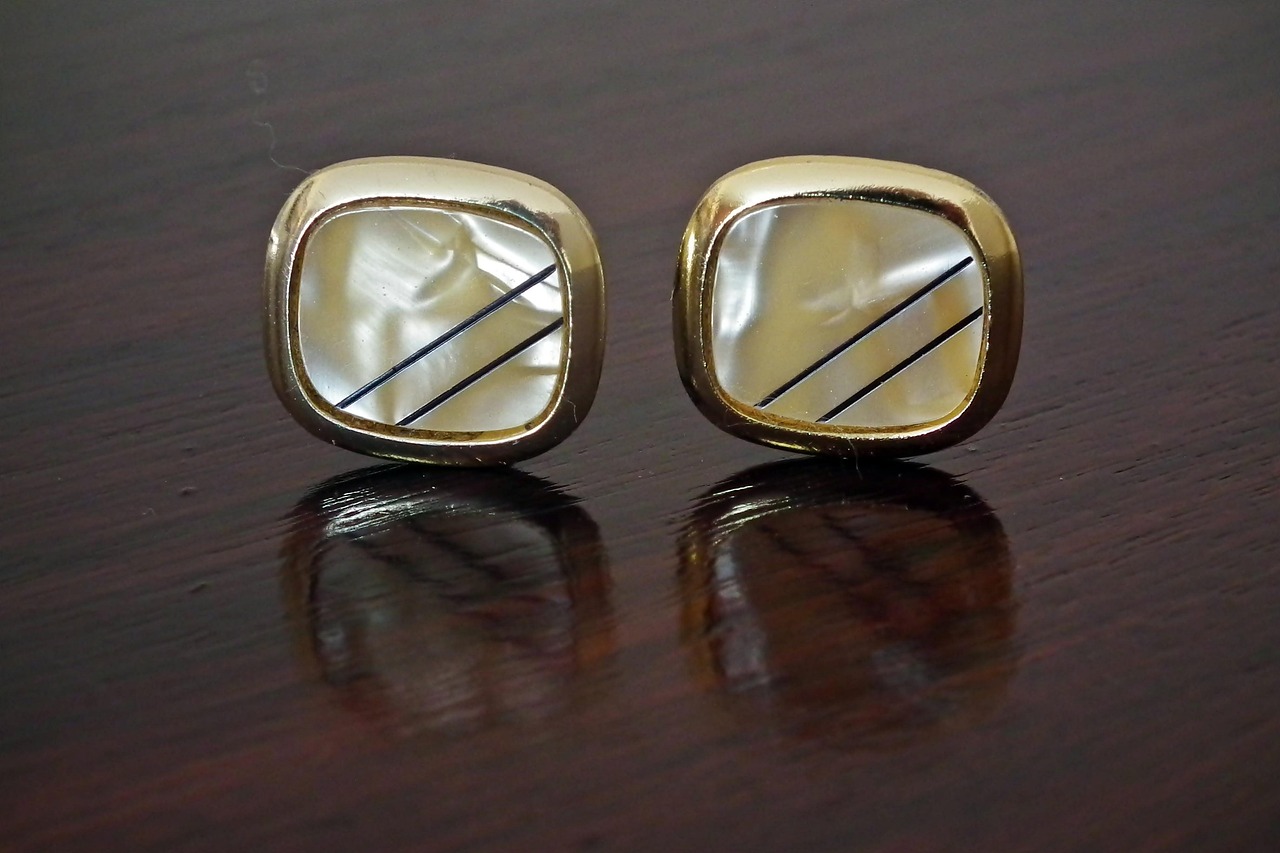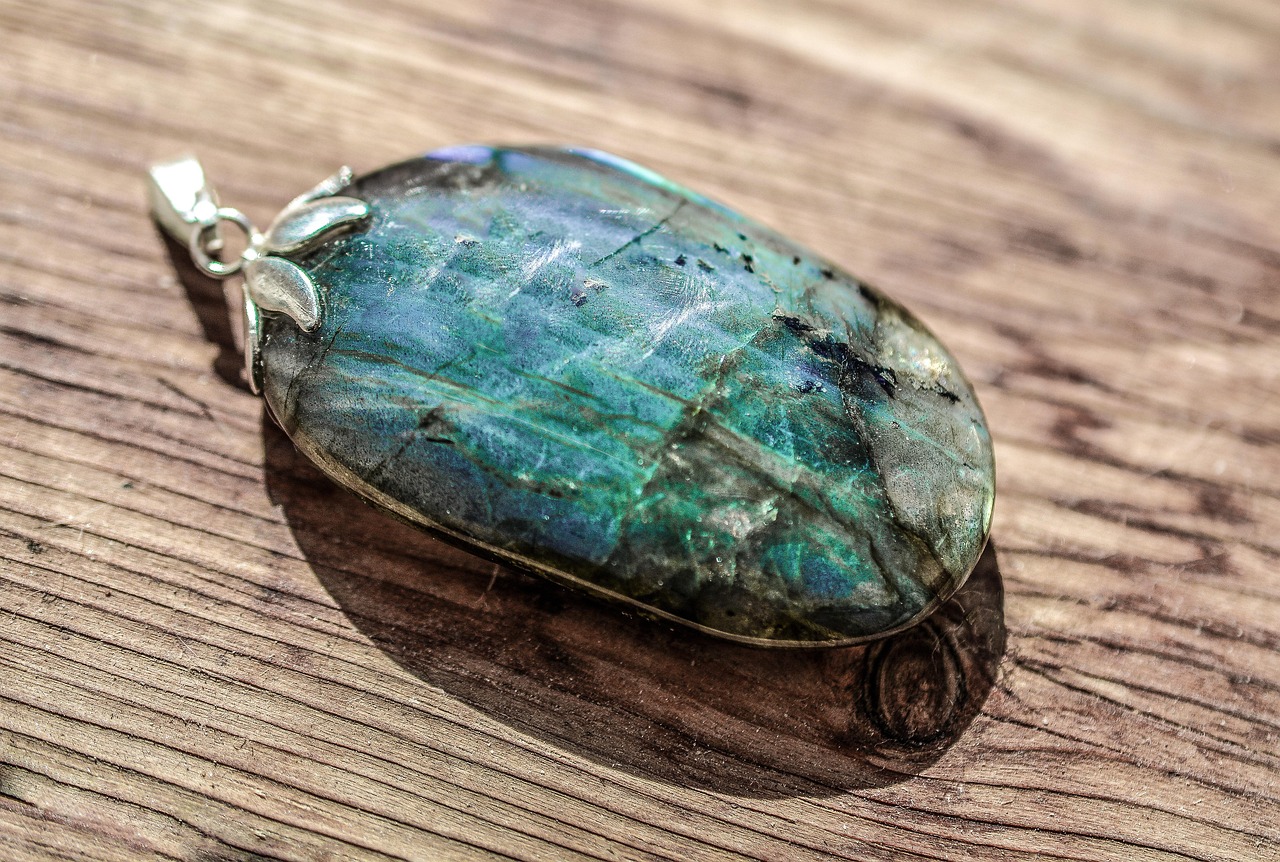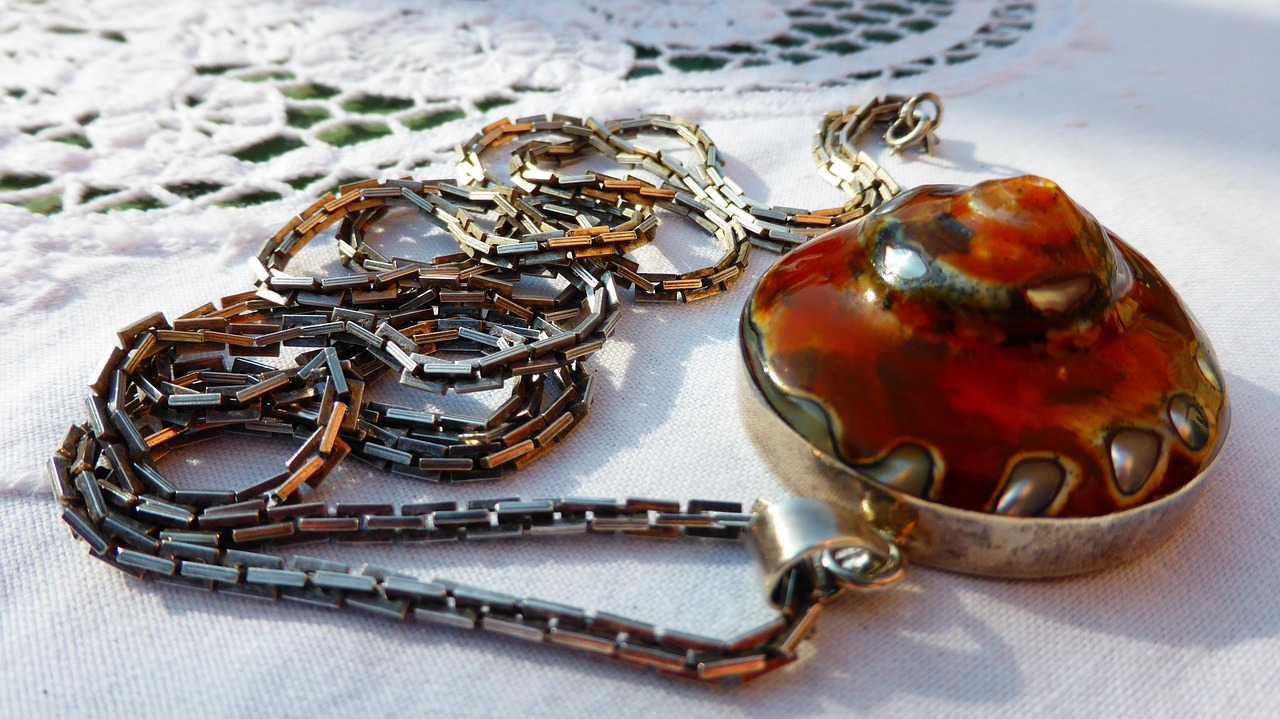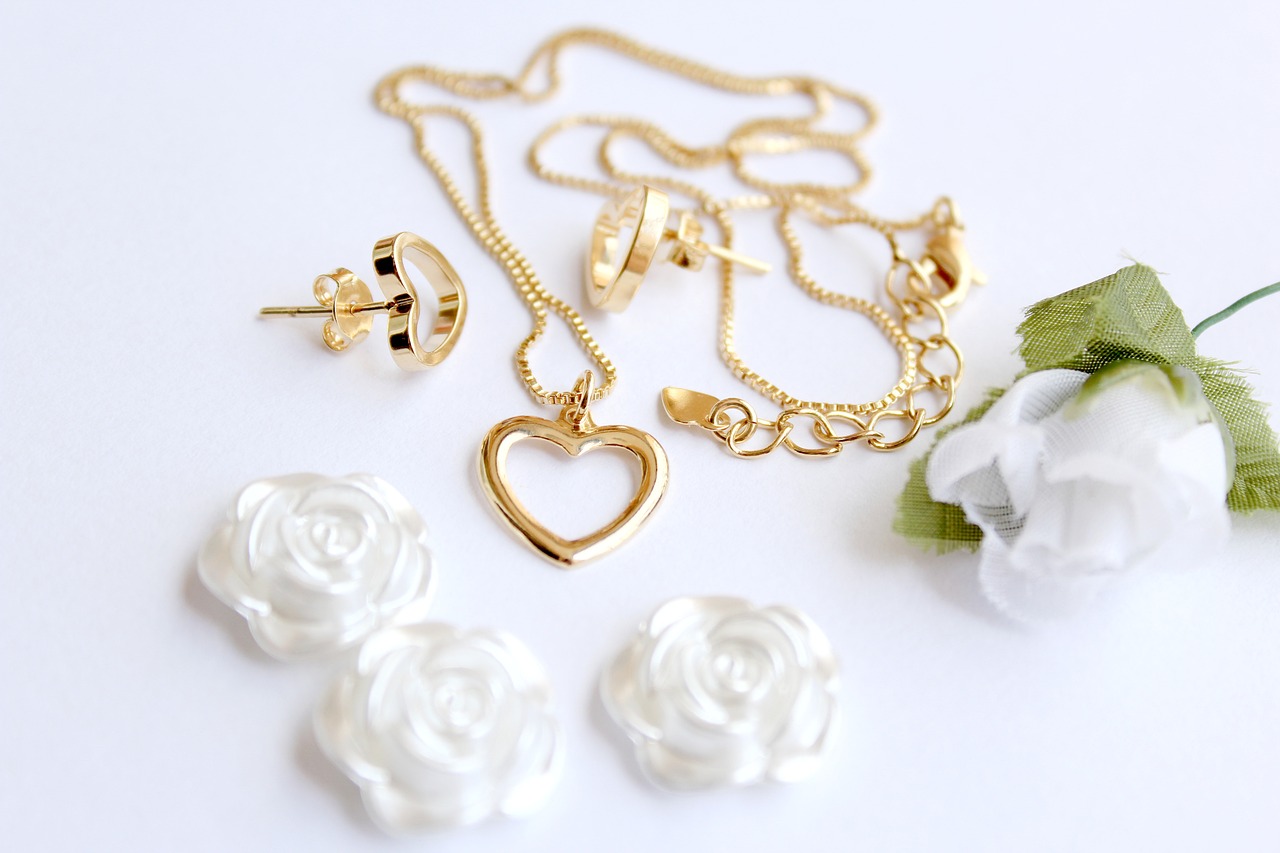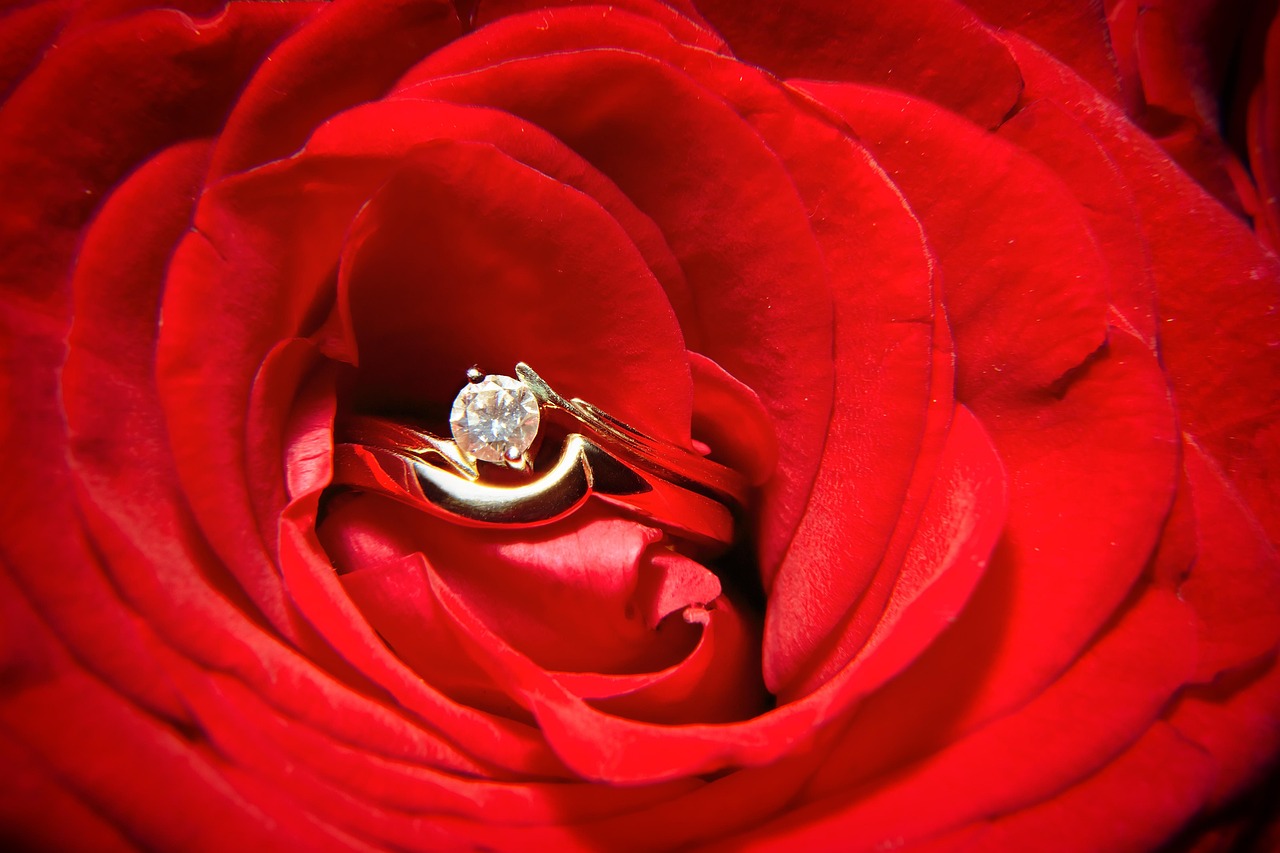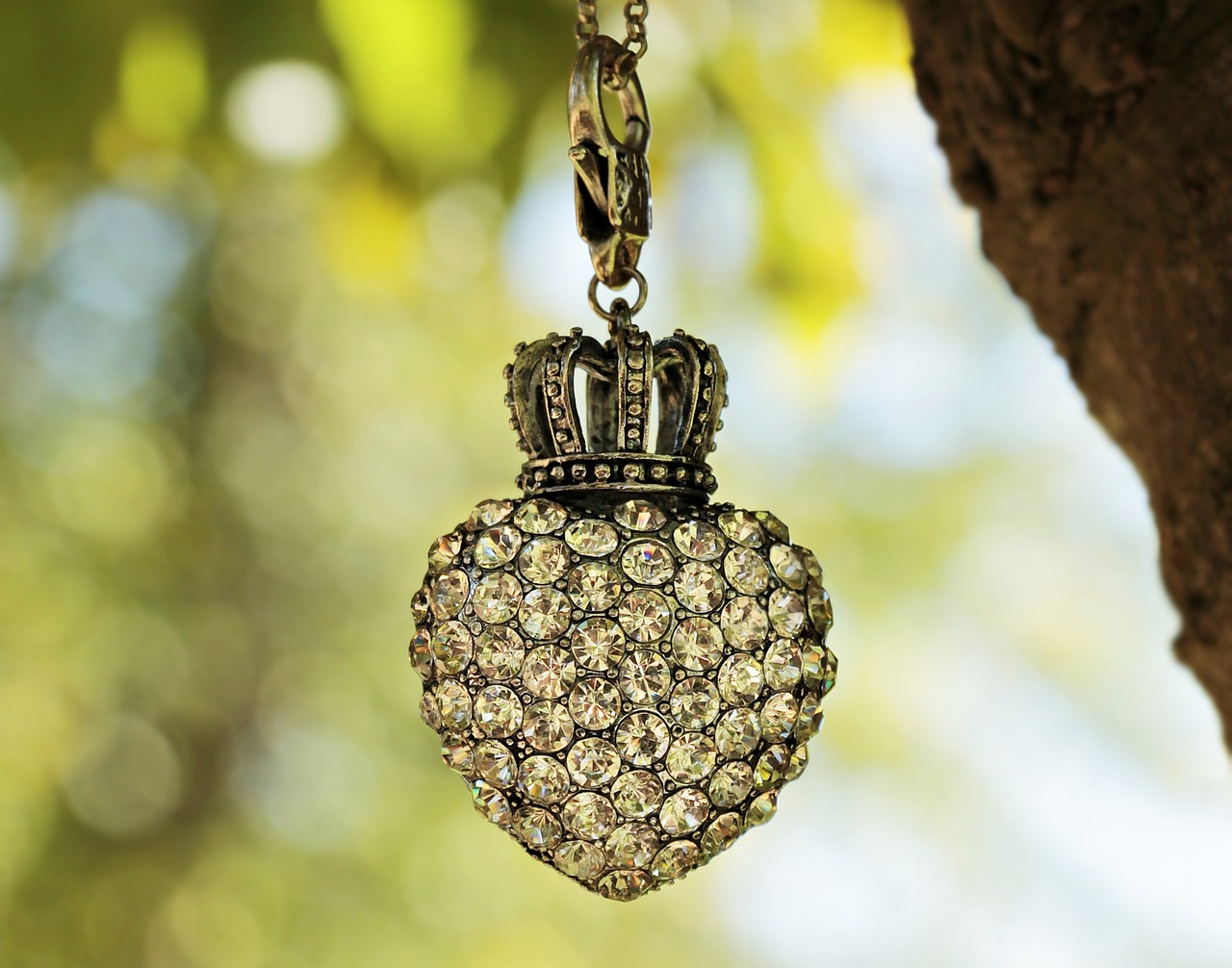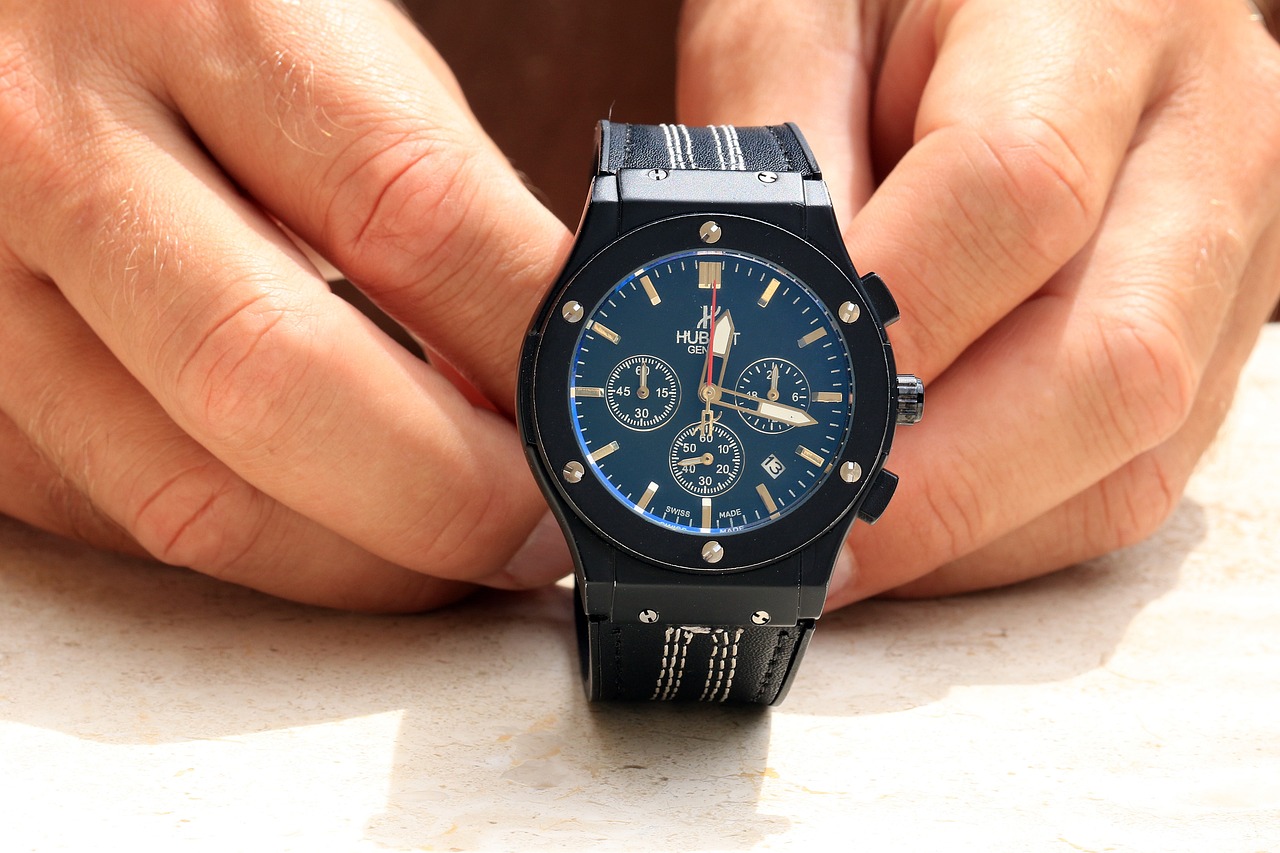This article delves into the rich history of ancient Egyptian jewelry, highlighting its intricate designs and the profound mythological connections that influenced its creation and use in society. Ancient Egyptians were not only skilled artisans but also deeply spiritual people, and their jewelry reflected both their artistic prowess and their cultural beliefs.
Ancient Egyptian jewelry is renowned for its unique craftsmanship, vibrant colors, and symbolic meanings. The use of materials such as gold, silver, and precious stones like lapis lazuli and turquoise defined this ancient art form. Jewelry pieces often featured intricate designs, showcasing the skill of artisans who utilized techniques like casting, inlay, and beading.
Mythology played a crucial role in shaping the designs of ancient Egyptian jewelry. The gods and goddesses inspired motifs, symbols, and the overall aesthetic of these adornments. For instance, the ankh symbol, representing life, and the lotus flower, symbolizing rebirth, were commonly incorporated into jewelry designs.
Many pieces of ancient Egyptian jewelry featured symbols believed to offer protection. Two prominent examples are:
- The Eye of Horus: A powerful amulet representing protection and royal power.
- Scarab Beetles: Emblematic of transformation and rebirth, these were believed to protect the wearer in the afterlife.
The Eye of Horus was a significant symbol in ancient Egypt, often used in jewelry to signify protection and divine guidance. It was believed that wearing this amulet would shield the wearer from harm and bring good fortune.
Scarab beetles, revered in ancient Egyptian culture, represented the cycle of life and rebirth. Jewelry featuring scarabs was commonly worn as a talisman, believed to bestow protection and ensure a safe passage to the afterlife.
Jewelry was not merely decorative; it served as a marker of social status in ancient Egypt. Different classes used jewelry to signify wealth and power, with the elite often adorned in elaborate pieces made from precious metals and stones.
The type and amount of jewelry worn indicated an individual’s social standing. The wealthy elite displayed their influence through intricate designs and the use of rare materials, while commoners wore simpler adornments.
Jewelry was integral to burial practices in ancient Egypt. Funerary jewelry, often buried with the deceased, was believed to accompany the soul into the afterlife. Common items included necklaces, bracelets, and rings, each carrying specific meanings related to protection and rebirth.
Jewelry was an essential part of daily attire in ancient Egypt, serving both practical and aesthetic purposes. It was worn by both men and women, enhancing their appearance while also conveying social status.
Not all jewelry was created equal; some pieces were meant for daily wear while others were reserved for special occasions. Everyday adornments were typically simpler, while ceremonial pieces featured elaborate designs and were often used in religious or state ceremonies.
Jewelry also played a vital role in rituals and ceremonies. Specific pieces were used in religious practices, symbolizing the connection between the earthly realm and the divine, often worn by priests or during significant rites.
The legacy of ancient Egyptian jewelry continues to influence modern design and fashion. Contemporary jewelry makers often reinterpret ancient motifs, blending traditional aesthetics with modern styles, ensuring that the rich history of ancient Egyptian jewelry remains alive in today’s world.
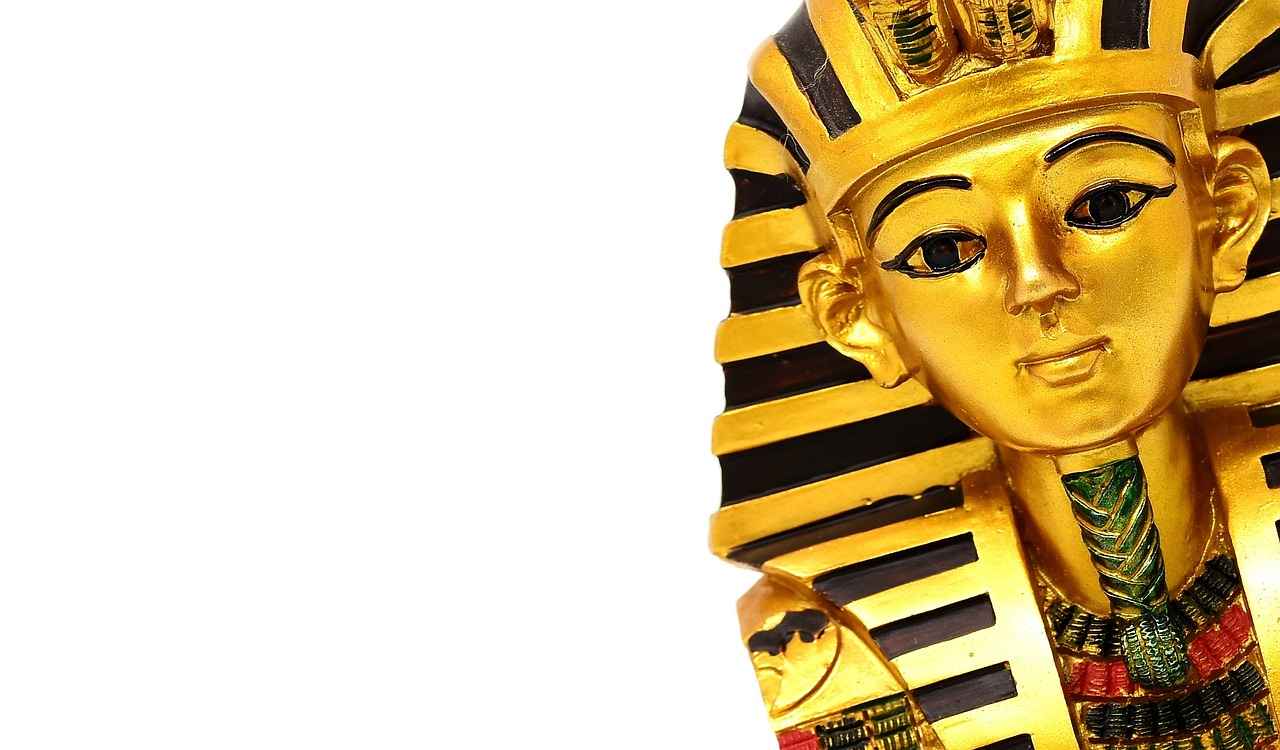
What Are the Key Features of Ancient Egyptian Jewelry?
Ancient Egyptian jewelry is a fascinating subject, reflecting the culture’s rich history and artistic achievements. Renowned for its unique craftsmanship, vibrant colors, and symbolic meanings, this ancient art form has captivated people for centuries. In this section, we will explore the key features that defined ancient Egyptian jewelry, including the materials, styles, and techniques used by artisans of the time.
The materials chosen for jewelry-making were significant in ancient Egypt, as they often held symbolic meanings and were believed to possess magical properties. The most commonly used materials included:
- Gold: Revered for its beauty and rarity, gold was often associated with the gods and the afterlife. It was used extensively in both everyday jewelry and funerary pieces.
- Silver: Although less common than gold, silver was valued for its luster and was often used in jewelry for the elite.
- Precious Stones: Gemstones like lapis lazuli, turquoise, and carnelian were frequently incorporated into designs, each chosen for its color and supposed protective qualities.
- Glass: Ancient Egyptians also created glass beads and ornaments, showcasing their innovative techniques in crafting materials.
The styles of ancient Egyptian jewelry were as diverse as the materials used. Key styles included:
- Necklaces: Often adorned with intricate pendants and beads, necklaces served both decorative and symbolic purposes.
- Bracelets: Worn by both men and women, bracelets were crafted from various materials and often featured charms for protection.
- Earrings: These were popular among women, with designs ranging from simple hoops to elaborate pieces embellished with gemstones.
- Rings: Rings were not only fashionable but also functional, often engraved with symbols or inscriptions.
The techniques employed by ancient Egyptian jewelers were advanced for their time. Some of the most notable techniques included:
- Lost-wax Casting: This method allowed artisans to create intricate designs by pouring molten metal into a mold made from wax.
- Granulation: Tiny beads of gold or silver were fused onto the surface of jewelry to create decorative patterns.
- Inlay Work: Different materials, such as stones or glass, were set into metal to create stunning visual effects.
Symbolism played a crucial role in the design of ancient Egyptian jewelry. Many pieces featured motifs that represented various gods, goddesses, and beliefs. For instance:
- The Ankh: Symbolizing life, the ankh was often incorporated into jewelry as a protective talisman.
- Lotus Flowers: Representing rebirth and purity, lotus motifs were popular in necklaces and earrings.
- Scarab Beetles: As symbols of transformation, scarabs were frequently used in amulets and were believed to provide protection in the afterlife.
In summary, ancient Egyptian jewelry is a remarkable testament to the civilization’s artistic prowess and cultural beliefs. With its distinctive materials, styles, and techniques, this jewelry not only served as adornment but also played a significant role in the spiritual and social lives of the ancient Egyptians.

How Did Mythology Influence Jewelry Design?
Ancient Egyptian jewelry is not merely decorative; it is steeped in mythological significance. The rich tapestry of Egyptian mythology provided a profound source of inspiration for artisans, who incorporated various gods and goddesses into their designs. This connection between mythology and jewelry is evident in the motifs, symbols, and overall aesthetics that characterized these ancient adornments.
One of the most prominent influences in ancient Egyptian jewelry design was the representation of deities. For example, the goddess Isis, known for her protective qualities and maternal instincts, was often depicted in jewelry pieces. Artisans would create intricate pendants and amulets featuring her likeness, believing that wearing such pieces would invoke her protection and blessings. Similarly, the god Horus, often symbolized by the falcon, inspired various designs that emphasized strength and royalty.
- Motifs Inspired by Deities: Jewelry pieces often included motifs representing gods and goddesses, such as the ankh, symbolizing life, and the was scepter, signifying power.
- Symbolic Color Use: Colors held significant meanings in ancient Egyptian culture. For instance, gold was associated with the divine, while turquoise symbolized fertility and rebirth.
- Amulets for Protection: Many pieces were crafted as amulets designed to protect the wearer from evil spirits or misfortune, further intertwining mythology with daily life.
The Eye of Horus is a prime example of a symbol derived from mythology that found its way into jewelry design. This powerful amulet was believed to offer protection, health, and restoration. Its incorporation into jewelry not only served aesthetic purposes but also functioned as a spiritual safeguard for the wearer. Scarabs, another significant motif, symbolized rebirth and transformation, reflecting the Egyptian belief in the afterlife. Jewelry featuring scarab designs was often worn by both the living and the deceased, emphasizing its importance in both daily life and funerary practices.
Moreover, the use of jewelry in rituals and ceremonies further highlights the influence of mythology. Special pieces were often created for religious ceremonies, adorned with symbols that represented divine favor and protection. For instance, during important rites, priests and priestesses wore jewelry that embodied various deities, reinforcing their connection to the divine and enhancing the spiritual atmosphere of the events.
In addition to the direct representations of deities, ancient Egyptian jewelry also reflected broader mythological themes. The use of animals, such as lions and cobras, in jewelry design often symbolized power and protection. These creatures were revered in mythology, and their depiction in jewelry served to connect the wearer to the strength and attributes associated with these animals.
The craftsmanship of ancient Egyptian jewelry was not only about aesthetics but also about conveying a deeper meaning. Artisans skillfully blended mythological elements with practical design, creating pieces that were both beautiful and imbued with cultural significance. The intricate designs and use of precious materials, such as gold and lapis lazuli, showcased the artistry of the time while also serving a spiritual purpose.
In conclusion, the influence of mythology on ancient Egyptian jewelry design is profound and multifaceted. From protective amulets to pieces adorned with divine symbols, mythology shaped not only the aesthetics of jewelry but also its role in society. By understanding these connections, we gain insight into the values and beliefs that defined ancient Egyptian culture, showcasing how deeply intertwined art and mythology were in this remarkable civilization.
Symbols of Protection in Jewelry
Ancient Egyptian jewelry is not only a testament to the artistry of the time but also a reflection of the deep-seated beliefs and values of the society. Among the various motifs and symbols embedded in these exquisite pieces, certain icons stood out for their protective qualities. This section delves into the symbols of protection found in ancient Egyptian jewelry, including the Eye of Horus and scarabs, exploring their meanings and significance in the lives of the ancient Egyptians.
The Eye of Horus, also known as the Wadjet, is one of the most recognizable symbols from ancient Egypt. It represents not only protection but also healing and restoration. According to mythology, Horus lost his eye in a battle against Set, the god of chaos. The eye was later restored by the god Thoth, symbolizing the triumph of order over chaos.
- Protection: The Eye of Horus was believed to ward off evil and protect the wearer from harm.
- Healing: It was also associated with healing, making it a popular choice for amulets.
- Royal Power: Often worn by pharaohs, it signified their divine right to rule and their connection to the gods.
Scarabs, or scarab beetles, held a special place in ancient Egyptian culture, symbolizing rebirth and transformation. The scarab represents the sun god Ra, who rolls the sun across the sky, akin to how the scarab rolls dung balls, which were seen as a source of new life.
- Transformation: Scarabs were believed to aid in the transformation of the soul in the afterlife.
- Fertility: They were also associated with fertility and new beginnings, making them popular in jewelry.
- Protection: Scarabs were often included in burial items to protect the deceased on their journey to the afterlife.
In addition to the Eye of Horus and scarabs, several other symbols were prevalent in ancient Egyptian jewelry, each offering its unique form of protection:
- Ankh: The symbol of life, representing eternal life and protection against death.
- Lotus Flower: Symbolizing purity and rebirth, often seen in jewelry designs.
- Uraeus: The rearing cobra, representing sovereignty and protection, commonly worn by pharaohs.
These symbols were not merely decorative; they were infused with meaning and purpose, serving as talismans to safeguard the wearer from misfortune and evil forces. The ancient Egyptians believed that by adorning themselves with these protective symbols, they could invoke the power of the gods and ensure their safety in both life and the afterlife.
The significance of these symbols transcends mere aesthetics, reflecting a profound understanding of spirituality and the universe. Ancient Egyptians viewed their jewelry as an extension of their beliefs, a means to connect with the divine and secure their place in the cosmos.
The Eye of Horus: A Powerful Amulet
The Eye of Horus, also known as the “Wadjet,” is one of the most recognizable symbols from ancient Egypt, embodying a rich tapestry of mythology, spirituality, and artistry. This powerful amulet was not only a representation of protection but also a significant emblem of royal authority and divine insight. In this section, we will explore the multifaceted uses of the Eye of Horus in jewelry and its profound cultural importance.
The Eye of Horus represents the left eye of the falcon-headed god Horus, who was the deity of the sky and kingship. According to ancient Egyptian mythology, Horus lost his eye during a battle with his uncle Set, who had murdered his father, Osiris. The eye was subsequently restored by the god Thoth, symbolizing healing and protection. This narrative imbues the Eye of Horus with a dual significance: it serves as both a protective talisman and a symbol of resurrection.
Jewelry adorned with the Eye of Horus was prevalent among ancient Egyptians, often crafted from gold, silver, and semi-precious stones. These pieces were designed not only for aesthetic appeal but also for their believed protective qualities. The Eye was commonly incorporated into necklaces, rings, and amulets, serving as a constant reminder of the wearer’s connection to divine protection and royal power.
The Eye of Horus transcended its role as a mere decorative element; it was deeply embedded in the cultural and spiritual life of ancient Egyptians. This symbol was believed to ward off evil and ensure safety in both life and the afterlife. Many tombs were adorned with the Eye of Horus, reflecting the belief that it would protect the deceased on their journey to the afterlife. Additionally, the Eye was often associated with the concept of “Ma’at,” which signifies truth, balance, and cosmic order.
Royalty frequently wore jewelry featuring the Eye of Horus to signify their divine right to rule. Pharaohs believed that donning this symbol would grant them the protection of Horus, ensuring their reign was prosperous and secure. The Eye was often depicted in royal regalia and was an essential part of the royal insignia, reinforcing the connection between the gods and the rulers of Egypt.
Today, the Eye of Horus continues to inspire contemporary jewelry designs. Many artisans and jewelers incorporate this ancient symbol into modern pieces, appealing to those who seek both aesthetic beauty and spiritual significance. The Eye of Horus is often featured in necklaces, bracelets, and earrings, serving as a bridge between ancient traditions and modern fashion.
While the classic Eye of Horus design is universally recognized, variations exist that reflect different artistic interpretations. Some designs may include additional symbols or embellishments, such as the ankh or scarabs, which further enhance their protective qualities. These variations allow for personal expression while maintaining the cultural significance of the original symbol.
In summary, the Eye of Horus stands as a powerful testament to the intertwining of art, spirituality, and cultural identity in ancient Egypt. Its enduring legacy in jewelry highlights the timeless human desire for protection and connection to the divine.
Scarab Beetles: Symbols of Rebirth
Scarab beetles have long been revered in ancient Egyptian culture, symbolizing transformation and rebirth. These fascinating insects, known scientifically as Scarabaeidae, were associated with the sun god Ra and were believed to embody the cycle of life, death, and resurrection. The scarab’s life cycle, particularly its metamorphosis from a larva to a beetle, resonated deeply with the ancient Egyptians, who viewed this transformation as a metaphor for the human soul’s journey beyond death.
In the realm of jewelry, scarab motifs were prominently featured, serving not only as decorative elements but also as potent symbols of protection and guidance. Ancient artisans skillfully crafted scarab amulets from various materials, including gold, lapis lazuli, and faience, often inlaid with precious stones to enhance their beauty and spiritual significance. These amulets were commonly worn around the neck or placed in tombs to ensure safe passage to the afterlife.
One of the most significant beliefs surrounding scarabs was their role as protectors. The ancient Egyptians believed that wearing a scarab amulet could shield the wearer from evil spirits and misfortune. This belief was so deeply ingrained that many scarabs were inscribed with spells and prayers intended to invoke the divine protection of the gods. The phrase “May you be protected like the scarab” became a common blessing, reflecting the insect’s esteemed status in society.
Additionally, the scarab beetle’s association with the sun was pivotal in its symbolic representation. The ancient Egyptians observed how scarabs would roll balls of dung, which they viewed as a representation of the sun being rolled across the sky. This connection to the sun reinforced the idea of regeneration and the eternal cycle of life, making scarabs a powerful emblem in funerary practices.
Throughout history, scarabs have transcended their original cultural context, inspiring modern jewelry designs. Today, many contemporary pieces incorporate scarab motifs, appealing to those who seek to connect with the rich heritage of ancient Egypt. Jewelry designers often draw on the intricate patterns and vibrant colors that characterized ancient pieces, allowing wearers to embrace the symbolism of rebirth and transformation in their daily lives.
In summary, scarab beetles hold a profound place in ancient Egyptian culture, representing not only rebirth but also protection and divine guidance. Their enduring legacy in jewelry continues to captivate and inspire, reminding us of the timeless human fascination with the themes of life, death, and renewal.
Materials Used in Ancient Egyptian Jewelry
The craftsmanship of ancient Egyptian jewelry is a testament to the civilization’s rich cultural heritage and artistic expertise. One of the most fascinating aspects of this jewelry is the materials used in its creation. This section delves into the various metals, stones, and techniques that were pivotal in crafting these exquisite pieces, revealing their significance and the artistry behind them.
Ancient Egyptian jewelers utilized a variety of metals to create stunning adornments. The most prominent among these were:
- Gold: Revered for its brilliance and rarity, gold was the most sought-after metal. It symbolized wealth and divine power, often reserved for royalty and the elite.
- Silver: Though less common than gold, silver was also valued for its beauty. It was often used in conjunction with gold to create intricate designs.
- Copper: Used primarily by the lower classes, copper was more accessible and was often alloyed with other metals to enhance its durability.
In addition to metals, ancient Egyptians incorporated a range of semi-precious stones into their jewelry, each chosen for its color, symbolism, and perceived magical properties:
- Lapis Lazuli: This deep blue stone was highly prized and associated with the heavens. It was often used in the creation of amulets and decorative pieces.
- Turquoise: Known for its vibrant hue, turquoise symbolized protection and was commonly used in necklaces and bracelets.
- Carneolian: A reddish-brown stone believed to bring good fortune, carnelian was frequently crafted into beads and other decorative elements.
The techniques used in ancient Egyptian jewelry-making were as diverse as the materials themselves. Some of the most notable methods included:
- Granulation: This technique involved fusing tiny metal beads onto a surface, creating intricate patterns and textures.
- Inlay: Jewelers would often inlay stones into metal settings, enhancing the visual appeal and adding depth to the designs.
- Repoussé: A method where metal was shaped and raised into designs from the back, allowing for detailed relief work.
The choice of materials in ancient Egyptian jewelry was often influenced by symbolism. For instance, gold was not just a metal; it was considered the flesh of the gods, representing eternal life. Similarly, stones like lapis lazuli were believed to have protective properties, making them ideal for amulets.
Jewelry in ancient Egypt was not merely decorative; it served multiple purposes:
- Religious Significance: Many pieces were created to honor the gods and were often placed in tombs to accompany the deceased in the afterlife.
- Social Status: The type and amount of jewelry worn indicated an individual’s social standing, with the elite showcasing their wealth through elaborate designs.
- Protection: Jewelry was commonly believed to offer protection, with symbols like the Eye of Horus embedded in designs for safeguarding the wearer.
In summary, the materials used in ancient Egyptian jewelry were not only a reflection of the artisans’ skills but also a manifestation of the cultural and spiritual beliefs of the time. The combination of metals and stones, along with intricate techniques, resulted in pieces that were not only beautiful but also deeply meaningful.

What Role Did Jewelry Play in Social Status?
Jewelry in ancient Egypt was far more than mere decoration; it served as a profound indicator of social status. The way individuals adorned themselves with jewelry reflected their wealth, power, and position within the complex social hierarchy of ancient Egyptian society. This section delves into the different classes and how they utilized jewelry to signify their status.
The elite class in ancient Egypt, including pharaohs and high-ranking officials, adorned themselves with extravagant jewelry made from precious metals and gemstones. Gold, often referred to as the “flesh of the gods,” was a favored material, symbolizing divine power and immortality. The quantity and quality of jewelry worn by the elite were unparalleled, showcasing their affluence. In contrast, the middle and lower classes wore simpler pieces, often crafted from copper or faience, a glazed ceramic material. These pieces, while still beautiful, lacked the opulence of those belonging to the upper class.
In daily life, the type and amount of jewelry worn were crucial indicators of an individual’s social standing. For the wealthy, elaborate necklaces, bracelets, and earrings served not only as personal adornments but also as status symbols. The presence of intricate designs and the use of rare materials signified their high social rank. Conversely, commoners often wore minimal jewelry, which consisted of basic designs and materials that were more accessible. This disparity in jewelry reflected the broader social stratification of ancient Egyptian society.
Jewelry also played a vital role in funerary practices, reinforcing social status even after death. The wealthy were often buried with extensive collections of jewelry, including items like gold amulets, necklaces, and rings, which were believed to accompany them into the afterlife. These pieces were not only markers of their earthly wealth but also served to protect and provide for them in the next world. In contrast, less affluent individuals were typically buried with simpler adornments, reflecting their lower social standing.
Jewelry also had significant religious and ceremonial implications in ancient Egypt. High priests and priestesses wore elaborate jewelry during rituals, further emphasizing their elevated status. The use of specific symbols, such as the ankh or the Eye of Horus, in jewelry design was intended to convey divine protection and favor. This connection between jewelry and the divine realm reinforced the social hierarchy, as only those in positions of power had access to such sacred adornments.
Jewelry in ancient Egypt was not merely an aesthetic choice; it was a profound expression of social identity. The styles, materials, and designs used in jewelry reflected the wearer’s background, aspirations, and societal role. For instance, the use of specific motifs could signify allegiance to particular deities or reflect personal beliefs, further intertwining personal identity with social status.
In summary, jewelry in ancient Egypt was a multifaceted marker of social status, serving as a reflection of wealth, power, and identity. Its intricate designs and the materials used provided insight into the societal structure of the time, revealing much about the lives of those who wore them.
Jewelry as a Status Symbol
Jewelry has long been a powerful indicator of social status across various cultures, and ancient Egypt was no exception. In this section, we will explore how the elite used jewelry not only as a form of adornment but also as a means to communicate their wealth, influence, and power within society.
The type and amount of jewelry worn by individuals in ancient Egypt were significant markers of their social standing. The elite, including pharaohs and high-ranking officials, adorned themselves with lavish pieces made from precious metals and gemstones, which set them apart from the lower classes. These adornments were often intricately designed and imbued with symbolic meanings, further enhancing their status.
The materials used in creating jewelry were a clear reflection of an individual’s wealth. The elite favored gold, which was not only abundant in Egypt but also symbolized divine power. Precious stones such as turquoise, lapis lazuli, and carnelian were often incorporated into designs, showcasing the owner’s access to resources and craftsmanship.
| Material | Symbolism |
|---|---|
| Gold | Divine power and immortality |
| Turquoise | Protection and healing |
| Lapis Lazuli | Royalty and spirituality |
| Carnelian | Life and vitality |
Jewelry was not merely decorative; it served as a visual representation of authority. The elite often wore pieces that depicted gods and goddesses, reinforcing their divine right to rule. For instance, the use of the ankh, a symbol of life, in jewelry signified the wearer’s connection to the afterlife and their role in maintaining cosmic order.
In addition to everyday wear, jewelry was crucial in ceremonial contexts. The elite donned elaborate pieces during religious ceremonies, showcasing their high status and devotion to the gods. These ceremonial adornments often included large collars, earrings, and headpieces that were designed to catch the light and draw attention, further emphasizing the wearer’s prominence.
The display of jewelry among the elite had profound implications for social dynamics. It created a visible hierarchy, as those with more extravagant jewelry were seen as more powerful and influential. This practice not only solidified the social structure but also encouraged competition among the elite to showcase their wealth through increasingly elaborate jewelry.
The legacy of ancient Egyptian jewelry continues to resonate today, influencing modern jewelry design and fashion. Many contemporary pieces draw inspiration from the intricate designs and symbolic meanings of ancient adornments. The emphasis on using high-quality materials and the incorporation of mythological symbols in modern jewelry can be traced back to the practices of ancient Egypt, demonstrating the enduring impact of this ancient civilization.
In summary, jewelry in ancient Egypt was a powerful status symbol that reflected an individual’s wealth, authority, and position within the social hierarchy. Through its intricate designs, use of precious materials, and connection to divine symbolism, jewelry served as a critical element in the expression of power and social structure in ancient Egyptian society.
Funerary Jewelry and Its Significance
In ancient Egypt, jewelry played a vital role in burial practices, reflecting the deep-seated beliefs about the afterlife. The use of funerary jewelry was not merely decorative; it was imbued with profound significance, believed to assist the deceased in their journey to the afterlife. This section delves into the importance of funerary jewelry, the types of jewelry commonly buried with the deceased, and the symbolism behind these exquisite pieces.
What Types of Funerary Jewelry Were Used?
- Necklaces: Often made from gold, silver, and precious stones, these necklaces were designed to provide protection and blessings to the deceased.
- Bracelets: Worn on the wrists, bracelets symbolized eternal life and were believed to ward off evil spirits.
- Rings: Rings were frequently inscribed with protective spells and symbols, serving as a form of amulet for the afterlife.
- Earrings: These were not only adornments but also held protective qualities, often featuring symbols like the Eye of Horus.
Why Was Funerary Jewelry Important in Afterlife Beliefs?
The ancient Egyptians held a firm belief in the afterlife, viewing it as a continuation of life on earth. Funerary jewelry was believed to serve several critical functions:
- Protection: Jewelry pieces often contained symbols intended to protect the deceased from malevolent forces in the afterlife.
- Wealth and Status: The quality and quantity of jewelry buried with an individual reflected their social status and wealth in life, ensuring they maintained their position in the afterlife.
- Connection to the Divine: Many pieces were crafted with motifs of gods and goddesses, symbolizing a connection to the divine and the hope of favor in the afterlife.
What Materials Were Used in Funerary Jewelry?
The materials chosen for funerary jewelry were significant, as they were believed to possess specific properties. Common materials included:
- Gold: Symbolizing immortality and the divine, gold was the most favored material for creating jewelry.
- Lapiz Lazuli: This blue stone was associated with the heavens and was often used to create intricate designs.
- Turquoise: Known for its protective qualities, turquoise was frequently included in burial items.
- Glass: Although not as prestigious as precious stones, glass was often used to create colorful beads and embellishments.
How Did Funerary Jewelry Reflect Cultural Beliefs?
The intricate designs and symbols found in funerary jewelry were a direct reflection of ancient Egyptian cultural beliefs. For instance, the scarab beetle, a common motif, symbolized rebirth and regeneration. It was believed that wearing or being buried with a scarab would ensure a safe passage to the afterlife and a new beginning.
Additionally, the Eye of Horus was another significant symbol, representing protection and good health. Including such symbols in funerary jewelry was a way to invoke divine protection for the deceased.
In Conclusion
Funerary jewelry was an essential aspect of ancient Egyptian burial practices, serving not only as a marker of wealth and status but also as a vital component in the journey to the afterlife. The jewelry was rich in symbolism, crafted from materials believed to possess protective qualities, and intricately designed to reflect the cultural and religious beliefs of the time. Understanding the significance of funerary jewelry provides valuable insight into the ancient Egyptians’ views on life, death, and the afterlife.
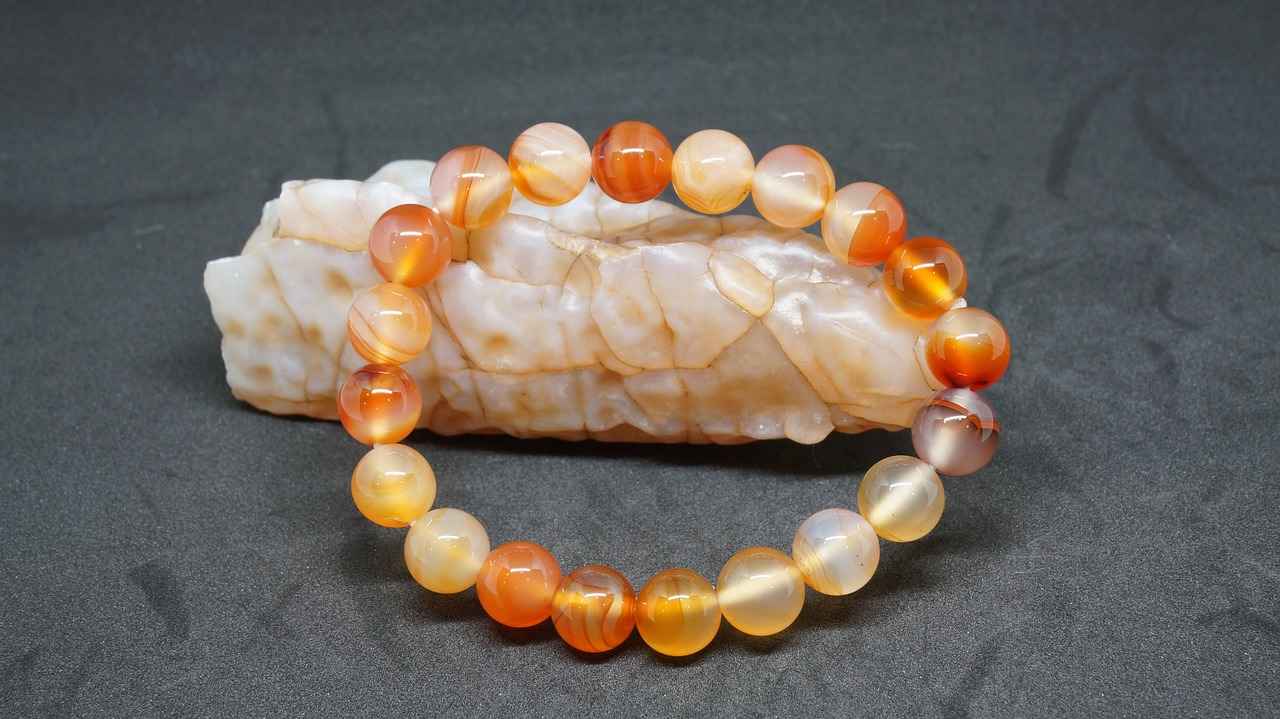
How Did Ancient Egyptians Use Jewelry in Daily Life?
Jewelry in ancient Egypt was not merely an accessory; it was an integral part of daily life, reflecting both practical and symbolic purposes. This section delves into how jewelry was worn, its significance in everyday activities, and the cultural implications behind these adornments.
In ancient Egyptian society, jewelry was worn by individuals of all social classes, from the wealthy elite to the common people. It was crafted with various materials, such as gold, silver, and precious stones, and was often adorned with intricate designs that held cultural significance.
- Necklaces: Often made of beads, gold, and semi-precious stones, necklaces were popular among both men and women. They were worn as everyday adornments and were believed to offer protection.
- Bracelets: These were common for both genders and were frequently engraved with symbols that represented protection and wealth.
- Earrings: While less common among men, earrings were a staple in women’s jewelry, often featuring elaborate designs that showcased the artisan’s skill.
- Rings: Rings were worn for both decorative and practical purposes, including signets that denoted status and authority.
Jewelry was typically layered, with individuals adorning themselves with multiple pieces to create a visually striking appearance. The way jewelry was worn often indicated a person’s social status and wealth. For instance, the elite would wear larger, more ornate pieces, while commoners opted for simpler designs.
Beyond aesthetics, jewelry served functional purposes. For example, some pieces acted as amulets, believed to provide spiritual protection against evil spirits and misfortune. The Eye of Horus and scarabs were commonly incorporated into jewelry, symbolizing protection and rebirth, respectively.
Jewelry was not only a part of daily wear but also played a crucial role in rituals and ceremonies. Special occasions, such as weddings and religious festivals, saw individuals donning their finest jewelry, which was often imbued with specific meanings. For instance, the use of gold in jewelry was associated with the divine and was believed to connect the wearer to the gods.
Jewelry was a clear indicator of one’s social standing in ancient Egypt. The wealthy adorned themselves with elaborate pieces, showcasing their affluence, while the less fortunate wore simpler items. This distinction was evident in the materials used, the complexity of designs, and the overall quantity of jewelry worn.
In addition to its daily use, jewelry held significant importance in funerary practices. The ancient Egyptians believed that jewelry would accompany the deceased into the afterlife, ensuring protection and status in the next world. This practice underscores the deep-rooted belief in the continuity of life beyond death.
In summary, jewelry in ancient Egypt was a multifaceted element of daily life, serving as both a decorative accessory and a symbol of deeper cultural beliefs. Its use transcended mere aesthetics, intertwining with social status, spirituality, and everyday functionality, making it a vital aspect of ancient Egyptian culture.
Everyday Adornments vs. Ceremonial Pieces
In ancient Egypt, jewelry served not just as a means of adornment but also as a reflection of social status, beliefs, and daily life. The distinction between everyday adornments and ceremonial pieces highlights the multifaceted role of jewelry in this ancient civilization. While some pieces were designed for regular wear, others were crafted specifically for significant occasions, each with its own purpose and significance.
Everyday adornments were typically made from more affordable materials and designed for daily use. Commonly worn by both men and women, these pieces included simple necklaces, bracelets, and earrings. The materials used often consisted of beads, leather, and less expensive metals, making them accessible to the general population.
- Beaded Necklaces: Often made from clay or semi-precious stones, these necklaces were colorful and lightweight.
- Simple Bracelets: Crafted from woven materials or basic metals, these were worn for both style and protection.
- Amulets: Many everyday pieces included small charms believed to offer protection or luck.
Ceremonial pieces, on the other hand, were intricately designed and often adorned with precious materials such as gold, silver, and gemstones. These items were reserved for special occasions, including religious ceremonies, weddings, and significant public events. Their elaborate designs often incorporated mythological symbols that conveyed deeper meanings.
- Gold Necklaces: Often featuring elaborate designs and inlaid with precious stones, these were worn by the elite during important ceremonies.
- Royal Crowns: Reserved for pharaohs and high priests, these crowns symbolized divine authority and power.
- Funerary Jewelry: Crafted specifically for burial, these pieces were believed to protect the deceased in the afterlife.
The design differences between everyday adornments and ceremonial pieces are striking. Everyday jewelry often features simpler, more functional designs, while ceremonial pieces showcase elaborate craftsmanship and intricate detailing. For instance, ceremonial items might include hieroglyphic inscriptions or motifs representing gods, which were not typically found on everyday wear.
Symbolism is a crucial element in both types of jewelry. Everyday pieces often included protective symbols like the Eye of Horus, while ceremonial jewelry was rich with mythological references. The use of symbols not only added aesthetic value but also conveyed messages about the wearer’s beliefs and social standing.
Everyday adornments played a significant role in the daily lives of ancient Egyptians. They were not merely decorative; they served practical purposes as well. For example, many pieces were believed to provide spiritual protection or to enhance fertility and prosperity. Furthermore, wearing jewelry was a way for individuals to express their personal style and social identity.
Ceremonial pieces were often exclusive to the wealthy and powerful, thus reinforcing social hierarchies. The more elaborate the jewelry, the higher the status of the wearer. This not only created a visible distinction between different social classes but also served as a means of displaying wealth and influence during public gatherings and rituals.
In conclusion, the differences between everyday adornments and ceremonial pieces in ancient Egypt illustrate the complex relationship between jewelry, culture, and society. While both forms of jewelry were significant in their own right, they served different purposes and reflected the diverse aspects of life in ancient Egypt.
Jewelry in Rituals and Ceremonies
Jewelry has always been a significant element in various cultures, but in ancient Egypt, it held a particularly profound role in rituals and ceremonies. The ancient Egyptians believed that jewelry was more than mere decoration; it was imbued with spiritual significance and was often essential in connecting the physical world with the divine.
Different types of jewelry were specifically crafted for use in rituals and ceremonies. These pieces were often adorned with symbols that represented gods, goddesses, and various aspects of Egyptian mythology. For instance, necklaces, bracelets, and rings were commonly worn during religious ceremonies to invoke protection and favor from the deities.
Jewelry served as a visual representation of the wearer’s beliefs and social status. Certain pieces were believed to carry protective qualities, such as the ankh, symbolizing life, and the Eye of Horus, representing protection and health. These symbols were not only decorative but also served as powerful amulets that provided spiritual benefits to the wearer.
In ancient Egyptian funerary practices, jewelry played a crucial role in ensuring safe passage to the afterlife. Deceased individuals were often buried with an array of jewelry, including gold necklaces, earrings, and bracelets. This practice was rooted in the belief that these items would accompany the deceased in the afterlife, providing them with the necessary adornments for their journey and status in the next world.
Jewelry was central to numerous rituals, including weddings, initiation ceremonies, and funeral rites. During weddings, brides adorned themselves with intricate jewelry to symbolize their union and the blessings of the gods. In initiation ceremonies, specific pieces were worn to signify the transition of individuals into new roles within society.
Jewelry was also significant in temple rituals. Priests and priestesses wore elaborate pieces that represented their devotion to the gods. These pieces often included gold and lapis lazuli, materials that were considered sacred. The jewelry worn during these ceremonies was intended to enhance the spiritual atmosphere and connect the worshippers with the divine.
Jewelry was a clear indicator of social status in ancient Egypt. The type and quality of jewelry worn during rituals often reflected the wearer’s wealth and position within society. Nobles and pharaohs adorned themselves with the most exquisite pieces, while commoners wore simpler designs. This distinction was particularly evident in ceremonial contexts, where the grandeur of jewelry showcased the power and influence of the elite.
In summary, jewelry in ancient Egypt was not merely ornamental; it was a vital component of rituals and ceremonies that connected the people with their gods and the afterlife. From funerary adornments to ceremonial pieces, jewelry encapsulated the rich tapestry of Egyptian beliefs and societal structures, illustrating the profound significance it held in their daily lives and spiritual practices.
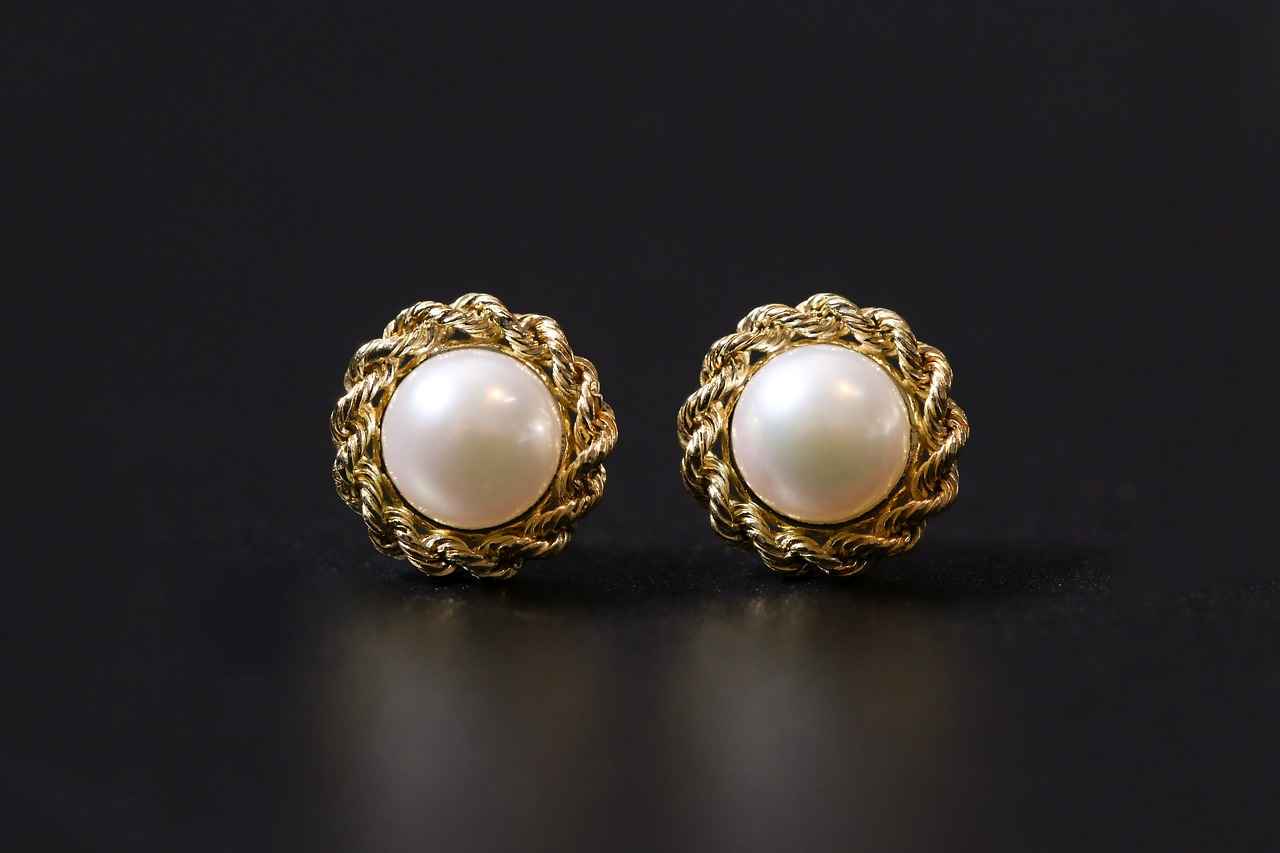
What Are the Legacy and Influence of Ancient Egyptian Jewelry Today?
The legacy of ancient Egyptian jewelry is a fascinating topic that continues to captivate designers and enthusiasts alike. The intricate designs, rich symbolism, and unique craftsmanship of ancient Egyptian adornments have left an indelible mark on the world of modern jewelry-making.
From the vibrant colors of lapis lazuli to the intricate goldsmithing techniques, the influence of ancient Egyptian jewelry can be seen in contemporary designs. Modern jewelers often draw inspiration from the iconic motifs and symbols prevalent in ancient Egypt, reinterpreting them to create pieces that resonate with today’s fashion sensibilities.
- Reimagined Symbols: Many modern jewelry pieces feature reimagined symbols such as the Eye of Horus and scarabs, which are infused with new meanings while retaining their historical significance.
- Materials and Techniques: Contemporary artisans often experiment with materials reminiscent of ancient times, such as gold, turquoise, and carnelian, using both traditional and modern techniques to craft stunning pieces.
- Fashion Trends: The revival of vintage styles has led to a surge in popularity for jewelry that echoes the grandeur of ancient Egyptian designs, often seen in high fashion collections and red carpet events.
One of the most significant aspects of ancient Egyptian jewelry is its symbolic richness. Each piece was crafted with intention, often serving as a talisman for protection or a mark of status. This deep connection to meaning continues to inspire modern designers who seek to imbue their creations with similar narratives.
Designers today are not merely replicating ancient designs; they are reinterpreting them in innovative ways. For instance, the lotus flower, a prominent symbol of rebirth in ancient Egypt, is often stylized in contemporary jewelry, appearing in pendants, earrings, and bracelets. This adaptation allows wearers to connect with the rich history of the symbol while enjoying a modern aesthetic.
Furthermore, the use of color in ancient Egyptian jewelry is being embraced by modern jewelers. The vibrant hues of stones like turquoise and carnelian are making a comeback, as they provide a striking contrast to more minimalist designs prevalent in recent years.
For many, wearing jewelry inspired by ancient Egypt is a way to celebrate cultural heritage. It serves as a reminder of the artistic achievements of past civilizations and their enduring influence on contemporary society. This connection fosters a sense of pride and belonging, allowing individuals to express their identity through the adornments they choose.
- Artisan Craftsmanship: Many modern jewelers strive to honor traditional techniques, ensuring that the craftsmanship reflects the skill and artistry of ancient artisans.
- Personal Narratives: Consumers are increasingly interested in the stories behind their jewelry, seeking pieces that resonate with their personal journeys while paying homage to ancient traditions.
In essence, the legacy of ancient Egyptian jewelry is not just a relic of the past; it is a living influence that continues to shape modern design and fashion. As we explore the intersection of history and contemporary artistry, it becomes clear that the allure of ancient Egypt remains as potent as ever, inspiring new generations of creators and wearers alike.
Frequently Asked Questions
- What materials were commonly used in ancient Egyptian jewelry?
Ancient Egyptian jewelry was crafted from a variety of materials, including gold, silver, and precious stones like lapis lazuli and turquoise. These materials were not just chosen for their beauty; they also held significant cultural meanings, symbolizing wealth and divine protection.
- How did ancient Egyptians use jewelry in their daily lives?
Jewelry in ancient Egypt served both practical and decorative purposes. While some pieces were worn daily, others were reserved for special occasions or rituals. This blend of functionality and symbolism made jewelry an essential part of their attire.
- What role did jewelry play in funerary practices?
Jewelry was a vital element in funerary practices, symbolizing the deceased’s status and beliefs about the afterlife. Items like amulets and elaborate adornments were often included in tombs to ensure protection and prosperity in the next life.
- How did mythology influence jewelry design in ancient Egypt?
Mythology deeply influenced the designs of ancient Egyptian jewelry. Symbols associated with gods and goddesses, such as the Eye of Horus and scarabs, were commonly incorporated into jewelry, believed to offer protection and blessings to the wearer.
- What are the key features of ancient Egyptian jewelry?
Key features of ancient Egyptian jewelry include intricate craftsmanship, vibrant colors, and symbolic representations. The use of specific motifs and materials highlighted the connection between the jewelry and the cultural beliefs of the time.
